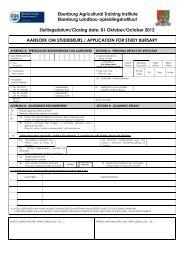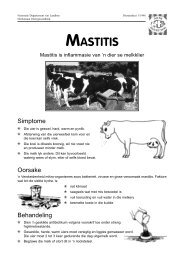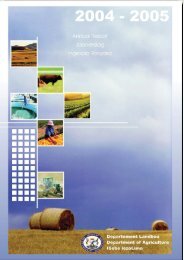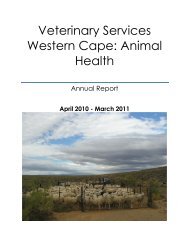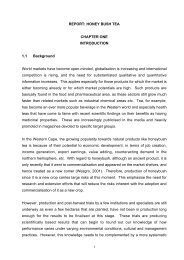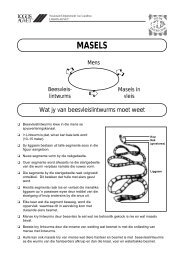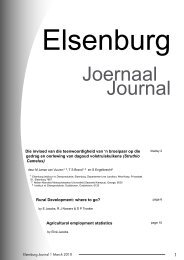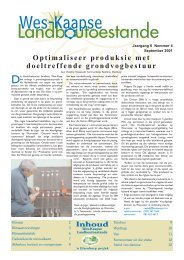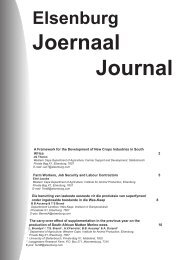The PROVIDE Project Standard Computable General Equilibrium ...
The PROVIDE Project Standard Computable General Equilibrium ...
The PROVIDE Project Standard Computable General Equilibrium ...
Create successful ePaper yourself
Turn your PDF publications into a flip-book with our unique Google optimized e-Paper software.
<strong>PROVIDE</strong> <strong>Project</strong> Technical Paper 2003: 3 October 2003<br />
<strong>The</strong> scaling factor on the values of transfers to households and enterprises through the<br />
household (HGADJ) and enterprise (EGADJ) adjusters, i.e.,<br />
HGADJ<br />
= HGADJ<br />
(C4j)<br />
EGADJ = EGADJ<br />
(C4k)<br />
also need to be fixed.<br />
This specification ensures that all the parameters that the government can/does control are<br />
fixed and consequently that the only determinants of government income and expenditure that<br />
are free to vary are those that the government does not directly control. Hence the<br />
equilibrating condition is that government savings, the internal balance, is not fixed.<br />
If however the model requires government savings to be fixed (C4l), i.e.,<br />
CAPGOV = CAPGOV<br />
(C4l)<br />
then either government income or expenditure must be free to adjust. Such a condition might<br />
reasonably be expected in many circumstances, e.g., the government might define an<br />
acceptable level of borrowing or such a condition might be imposed externally.<br />
In its simplest form this can be achieved by allowing one of the previously fixed adjusters<br />
(C4a to C4i) to vary. Thus if the sales tax adjuster (TSADJ) is made variable then the sales tax<br />
rates will be varied equiproportionately so as to satisfy the internal balance condition. More<br />
complex experiments might result from the imposition of multiple conditions, e.g., a halving<br />
of import duty rates coupled with a reduction in government deficit, in which case the<br />
variables TMADJ and CAPGOV would also require resetting. But these conditions might<br />
create a model that is infeasible, e.g., due to insufficient flexibility through the sales tax<br />
mechanism, or unrealistically high rates of sales taxes. In such circumstances it may be<br />
necessary to allow adjustments in multiple tax adjusters. One method then would be to fix the<br />
tax adjusters to move in parallel with each other.<br />
However, if the adjustments only take place through the tax rate scaling factors the relative<br />
tax rates will be fixed. To change relative tax rates it is necessary to change the relevant tax<br />
parameters. Typically such changes would be implemented in policy experiment files rather<br />
than within the closure section of the model.<br />
4.5. Numeraire<br />
<strong>The</strong> model specification allows for a choice of two price normalisation equations, the<br />
consumer price index and a producer price index, i.e.,<br />
© S. McDonald<br />
45




